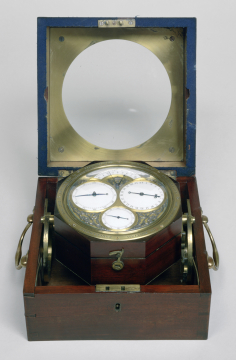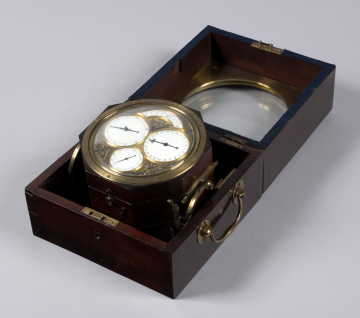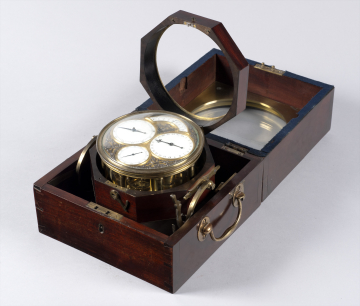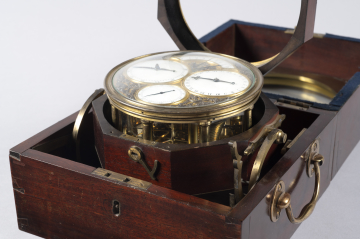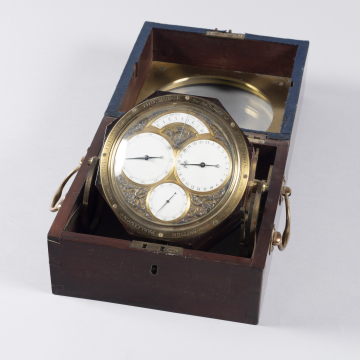Explore Collections


You are here:
CollectionsOnline
/
An eight-day marine chronometer by Thomas Mudge (1717-94) in a mahogany case.
Browse
An eight-day marine chronometer by Thomas Mudge (1717-94) in a mahogany case.
Brass, steel, enamel, glass and mahogany
Height: 15.6cm
Width: 21.4cm
Depth: 21.3cm
Width: 21.4cm
Depth: 21.3cm
Inscription: No. 10 - Pennington, Pendleton and Others for the Son of the Inventor
Museum number: NDR4
Not on display
Curatorial note
Thomas Mudge senior devised an extremely accurate chronometer for time-keeping at sea of which the prototype was ready in 1774, the year that John Harrison won the £20,000 prize offered by Parliament (in 1714) to 'such person or persons as shall discover the Longitude' with his fourth marine time-keeper (today in the National Maritime Museum). Thomas Mudge went on to refine his design produing a final third version in 1777 which possessed a degree of accuracy that remained unsupassed for almost a century. Mudge was awarded a prize of £3,000 by the Admiralty. Mudge's son, also Thomas, set up a business producing chronometers to his father's design (they are referred as 'copies'), working with two horologists, Howells and Pennington (and later, after Howells left the business) Pennington alone). Each chronometer was numbered and sold for between 170 and 180 guineas. Copy number 2 was dated 1794 and Soane's copy is the tenth copy and was probably made at Pendleton and Pennington's works in Camberwell. It retains its orignal escapement mechanism. It seems to have been made for the Duke of Marlborough who paid £167.10s for it: a portion of the Marlborough family crest is engraved on the face. It is in near pristine condition and probably never went to sea: it has no gimbals (to enable it to swing with the movement of a ship) and the box does not seem to be the type made to house a chronometer for marine use. It may well have been always intended as a presentation piece. Thomas Mudge junior completed only fifteen copies before ceasing business. Soane's acquisition of this important timepiece reflects his deep interest in technological and scientific matters.
Soane states in his 1835 Description that the chronometer was 'formerly in the possession of the Duke of Marlborough'.
Literature
Sir John Soane, Description, 1835, p.69
Soane collections online is being continually updated. If you wish to find out more or if you have any further information about this object please contact us: worksofart@soane.org.uk
